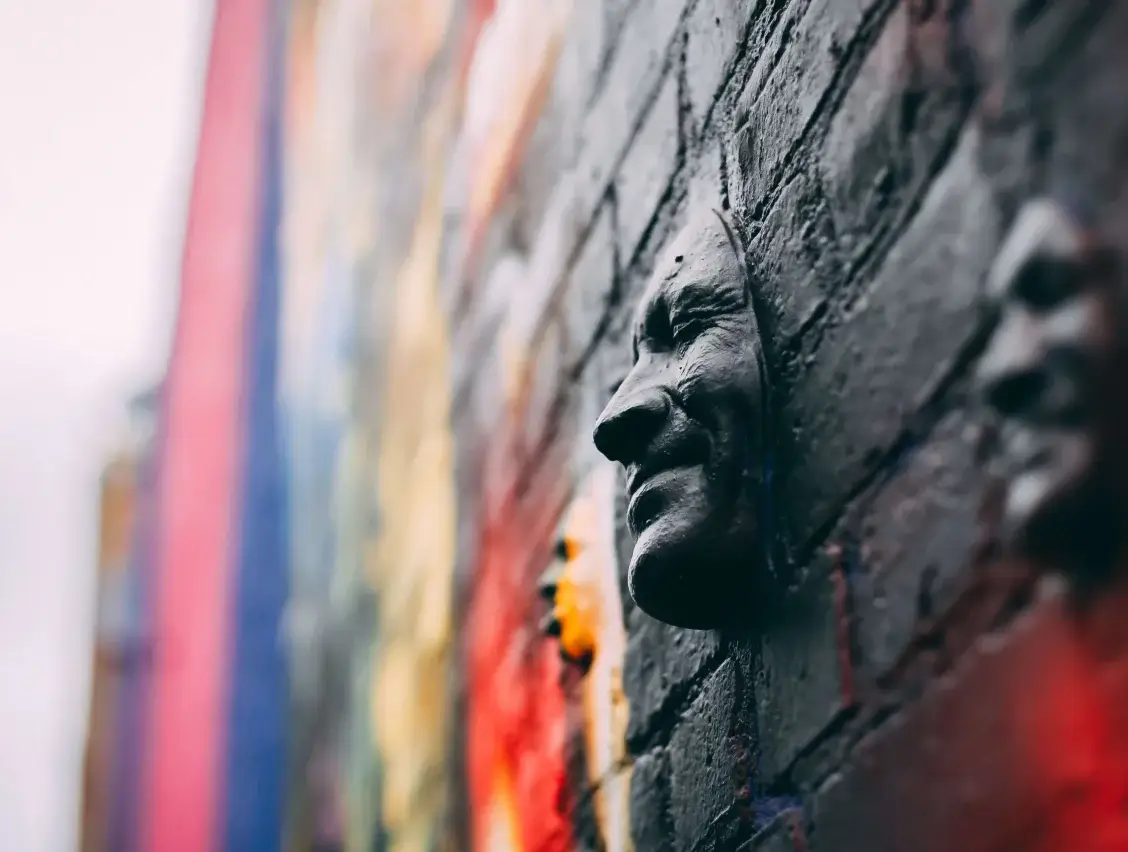As creative individuals, we crave artistic freedom. A white canvas, a new design file, or even a blank piece of paper seems to have endless possibilities. You have the liberty to do whatever you want, and it is exhilarating. Often, we associate creativity with something boundless, something that thrives without structure and rules.
But without a sense of direction, all the freedom in the world begins to get real scary, real fast. Before you know it, it’s 7:32 PM, the sun has set, your coffee is cold, and you’ve spent the last 6 hours trying to create something that simply doesn’t work. You break your head in circles, wondering where you went wrong, and go to bed telling yourself tomorrow will be better.
Here’s where constraints come in.
Sometimes to unleash your true creativity, you need to step inside the box and shackle yourself to the ground. As humans, it is our nature to thrive with our backs against the wall. We tend to get more creative and generate more varied solutions with limited options.

And yet, the concept of constraints seems to have somewhat of a negative connotation. The word makes you feel like you've been trapped 6 ft under the ground for 4 days without any sunlight and have lost all sense of hope.
Just like everything else in life, all you need is some perspective. Start asking yourself, what if I could use these constraints as a way to challenge myself? What if I could use the restrictions to create something far greater?
Constraints come in all shapes and sizes, from project constraints like time and budget to mental constraints like “I will never be good enough.” Though they may seem restrictive, research shows there is freedom in constraint. Constraints not only boost creative thinking, but they also help lead to bigger breakthroughs. They are a great starting point for any project and help clarify the creative process.
A new way of Thinking
In most TV shows, bottle episodes are quite common. Every show will have a couple of episodes where the cast finds themselves stuck in a particular situation or setting. These episodes are written mainly due to budgetary constraints; they use fewer cast members, effects, and props.
It is these constraints that allow writers to think outside the box, challenge their writing skills and come up with some of the greatest episodes in television history. One of the greatest bottle episodes is ‘Fly’ from Breaking Bad. Though borne from production budget restrictions, every Breaking Bad fan remembers watching Jesse and Walt trying to kill a fly for 45 minutes.
As individuals, we often find ourselves trapped in repetitive patterns of perceptions; for example, if we read ‘nature,’ our brain immediately goes, ‘forest, green, sunlight, calm.’ However, you’re forced to see things differently when you add a restriction. If we were to add the color ‘red’ to nature, the scene could be a field of serene tulips or an angry fire burning its way through the forest. Constraints help us create environments that unleash untapped potential.

Positive Constraints
Constraints help us break above the norm. They keep us motivated to explore different paths that, in turn, generate unconventional products, services, or even ideas. In a work environment, they are a great metric to ensure that business goals are always met.
Here are some constraints to start using:
Time
Whether self-imposed or a serious deadline, set periods simultaneously help you stay creative and productive. Time constraints ensure you don’t fall into a rabbit hole of “it’s just not good enough.” It forces you to fail faster and keep things moving.
Adapting the Pomodoro technique is a great way to use the time to your benefit. Set goals for 25 minutes, take a 5-minute break, and repeat. These bursts of 25 minutes ensure you focus, dig in, and output results frequently.
Reality
We often find ourselves wanting to do something that’s just impossible. Let’s say you’ve devised the perfect hiring strategy, but it requires every candidate to run a 10km marathon. These sorts of ideas are simply not realistic.
Try adapting the MAYA principle (Most Advanced, Yet Acceptable) to help anchor your creative process. MAYA allows you to innovate yet draws a clear line between reality and necessity.
⛏️ Dig deep and learn more about MAYA here.
Artificial Constraints
When all fails, and you’ve been going in circles for four days trying to complete a task, imposing artificial constraints is a great way to snap out of it. Do some divergent thinking tests where you ask yourself questions like, “What if I had only two days to create this project?” or “What if we swapped X and Y?”. Divergent thinking is a free-form way of association that can help you break out of old thinking patterns and fosters creative thinking.
Self-imposed constraints work wonders for creativity. Before you start a new project, explore all the probabilities and question every move to get your creative juices flowing.
Negative Constraints
All this said and done, some type of or too many constraints can restrict your freedom and sometimes lead to what I like to call ‘creative claustrophobia.’ Suddenly, that canvas seems too small, nothing makes sense, and you’ve lost all interest before you know it.
Constraints alone can stifle and kill creativity. While we need them to spur passion and insight, we also need a sense of hopefulness to keep engaged and unwavering in our search for the right idea. Innovation is born from the interaction between constraint and vision.
Here are some constraints to let go off;
Conventions
As members of society, we’re often forced to draw up mental lines. We’re constantly being told how things should work versus being allowed to discover and dictate these paths ourselves. Traditions, rules, and “best practices”; are just notions created and shoved down our throats.
Break out of the shackles and tear down the box. Only when you allow yourself to let go of these so-called conventions will you be able to see the bigger picture.
Self-imposed fear
One of the worst constraints out there is; self-imposed fear.
Questions like, “What will they think?” or “This will never be good enough” are all it takes to send you down a dark path. Being afraid of failure and experimenting is natural, but going against these instincts and allowing yourself to break free of these constraints must be mastered.
Embracing & Accepting Constraints
When your art director says s/he simply doesn’t want the color black in the product or your project manager is hell-bent on pushing the website out in 2 days, constraints might not seem fun.
The key to embracing constraints is to understand them. Ask yourself questions like who established the constraint and why. Once you determine the base of the constraint, you can begin generating solutions to tackle them.
If all else fails, here are some quick tips you help you out:
- Take a walk; sometimes, the best thing to do is to step away and clear your headspace
- Put some music on (this is never a bad tip)
- Look for inspiration; how did others deal with similar scenarios, and what solutions did they find?
- Talk to someone. Sometimes the simplest thing is to reach out, let it be a friend or a colleague, and gain some fresh perspective.
The need to adapt
While doing comedy improv, comics are constantly adapting. The audience sets out the initial constraints by answering questions or giving suggestions. The comics use these constraints to perform without any prior planning. They must make sure they're constantly, cohesively building a story. This may seem nerve-wracking as there is no space for prior preparation, but it allows the comics to explore all their possibilities and get creative.
If the last two years have taught us anything, we live in a constantly adapting world. When faced with tough obstacles like a pandemic, people survived by wearing masks, companies coped by offering remote work, and products evolved to fit pressing needs. When forced into a tough corner, we were forced open our minds, look at the “bigger picture,” and draw connections between things we wouldn’t have thought of before.
So take a second to consider; do constraints not widen the lens on possibilities and help foster creative growth?
Song of the article: Explore, Be Curious by Cloudkicker
Enjoyed this article? Don't miss out on more exclusive insights and real-life digital product stories at LeadReads. Read by Top C Execs.
Join here.
About the Author
Ummesalama is a UI & UX designer at Wednesday Solutions. She loves making mood boards, listening to Kings of Leon, and endlessly staring out windows.






